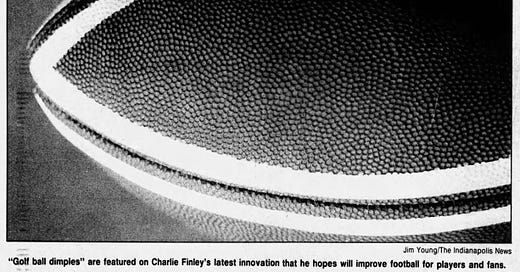Stickum
If Grip-Tite and Tanned in Tack® were not enough, some players thought using substances to enhance their grip was necessary. As far back as 1893, Yale's players applied resin to their hands after learning Harvard planned to wear leather uniforms in their game. Cecil Cushman, the longtime coach at the University of Redlands, developed a sticky or tacky substance called "Stickum" to help his ball handlers catch in the 1930s.
Still, Stickum was seldom a problem until 1977 when Lester Hayes, a rookie cornerback with the Oakland Raiders, was introduced to the product by his teammate, Fred Biletnikoff. Hayes soon applied Stickum to his hands in such quantity that opposing players complained it affected their ability to snap, throw, and otherwise handle the ball. The excessive Stickum era ended when the NFL banned sticky and slippery substances in 1981. The subsequent rise of receivers' grip-enhancing gloves has reduced gripping concerns for all positions other than quarterback.
The Grip Enhanced Football
We covered Charles Finley's Visually Enhanced Ball in Chapter 3, and he also made noise with the Grip Enhanced Football, which made a dent in the football grip challenge. The Grip Enhanced Football aimed to improve the quarterback's grip and spin, reduce fumbling, and enhance the receiver's ability to catch the ball while it also flew farther.
The secret to the Grip Enhanced Football was the leather produced by Horween Leather, which provides the leather for NFL footballs. Rather than having a raised pebble grain, grip-enhanced leather had small dimples or indentations, like a golf ball.
Keep reading with a 7-day free trial
Subscribe to Football Archaeology to keep reading this post and get 7 days of free access to the full post archives.




